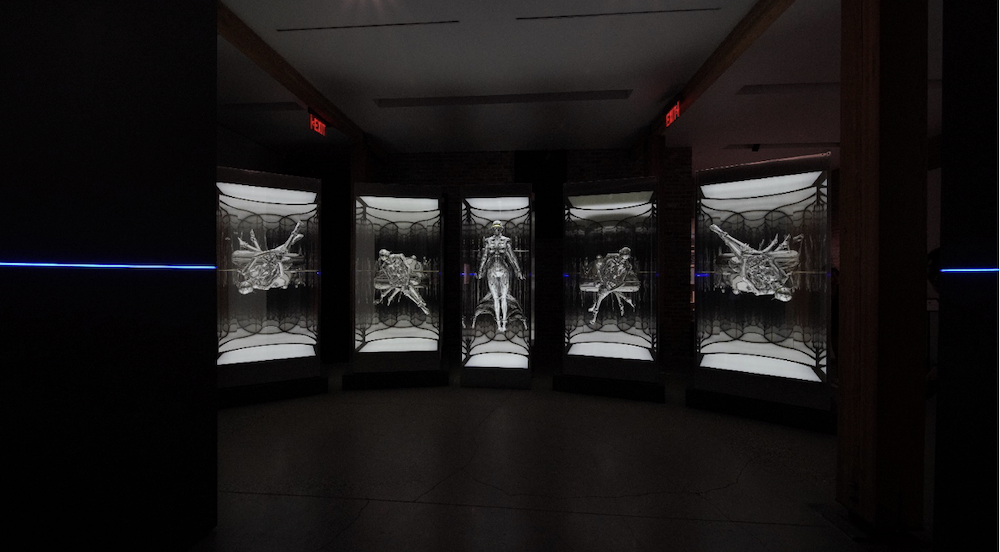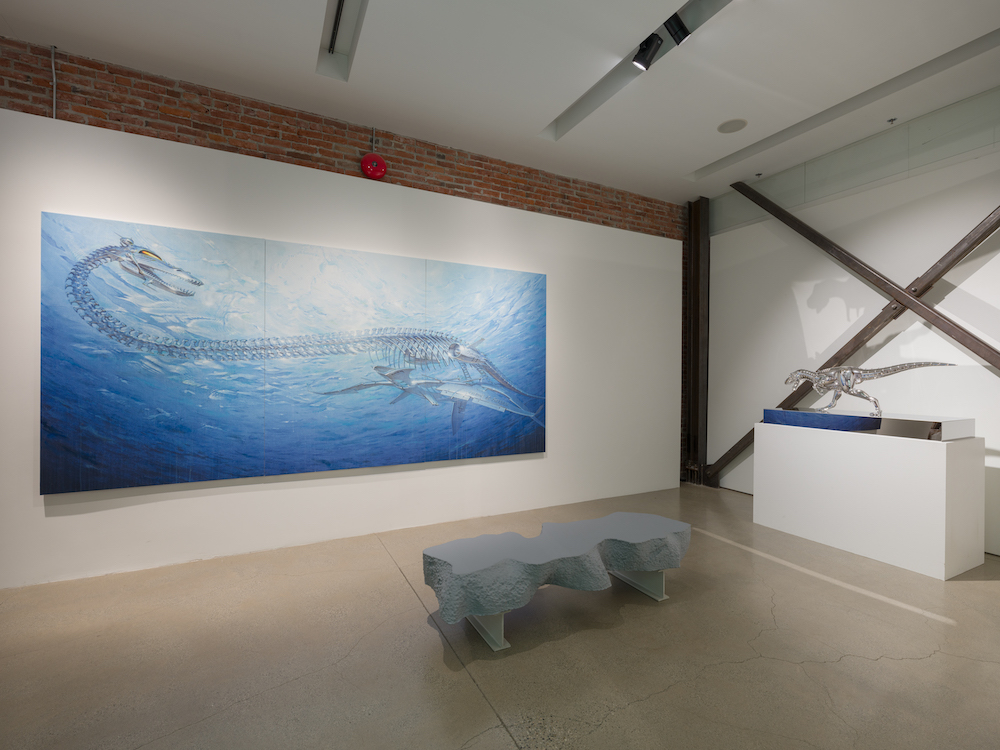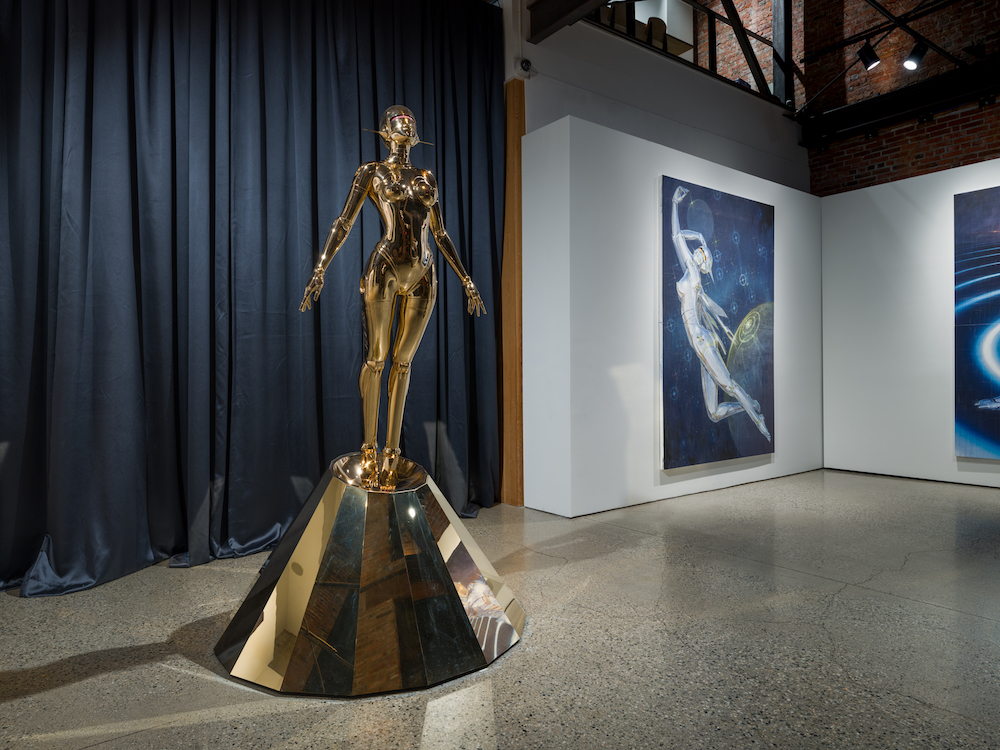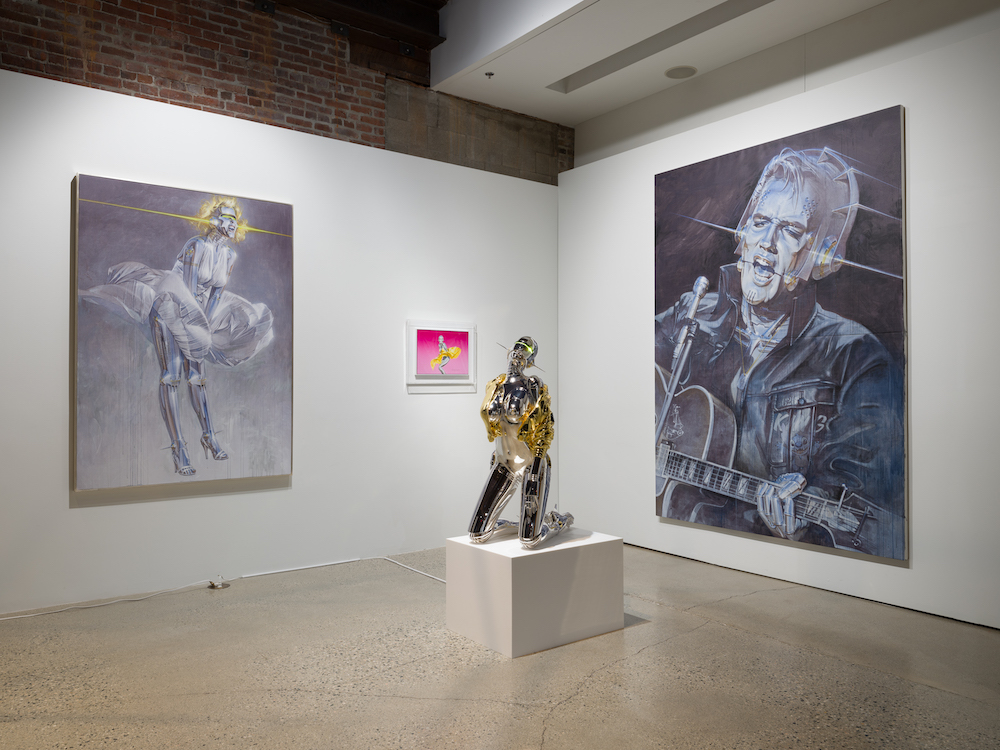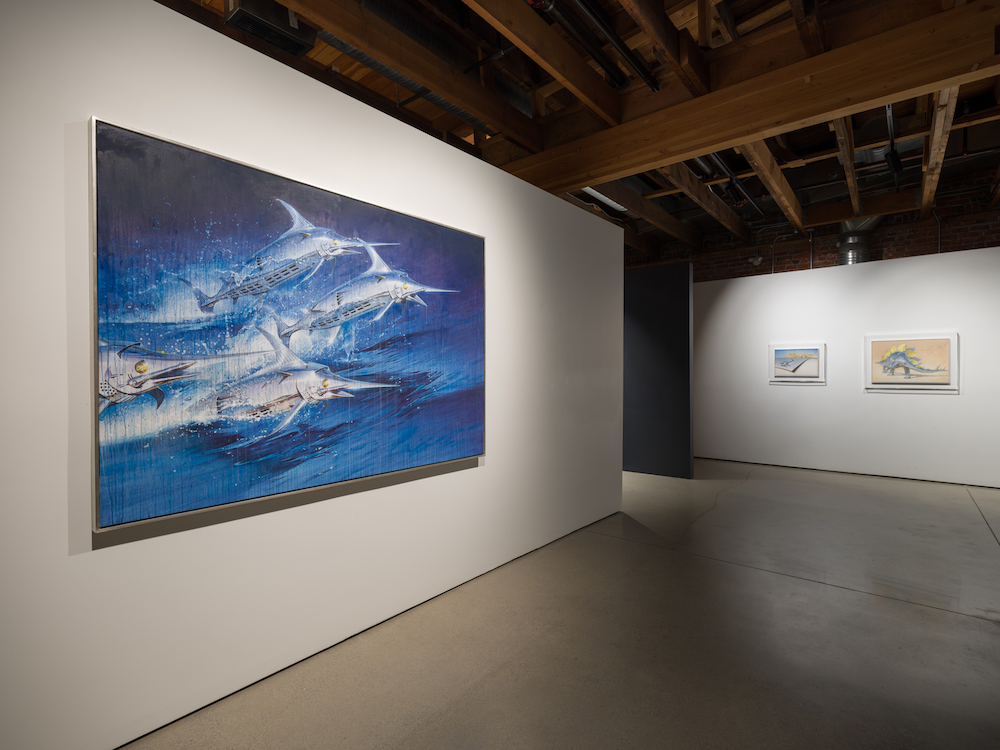Another report from Canada this week. The legendary and renowned Japanese artist and designer Hajime Sorayama just opened Space Travelers at CICA Vancouver, featuring a series of sculptures, installations and paintings.
Hailed as a visionary pioneer, Sorayama has dedicated his artistic career to exploring the profound questions surrounding the evolving interaction between humans and AI. His iconic super realistic cyborg images have sparked discussions worldwide and have inspired fellow artists and filmmakers, including Alex Garland on Ex Machina, and Paul Verhoeven on the 1987 Robocop. With his masterfully precise illustrations, Sorayama breathes life into his mechanical subjects, blurring the boundaries between human and machine, and offering a glimpse into the shared emotions and vulnerabilities that bridge the two worlds.
The relationship between AI and humans has become a subject of fervent debate, evoking a diverse range of emotions from admiration and yearning to concerns and apprehension. While humans extensively utilize AI and admire its intelligence, there exists a simultaneous fear of potential obsolescence. As early as 1927, Fritz Lang's groundbreaking film "Metropolis" broached this subject and initiated conversation. Building upon this foundation, Hajime Sorayama captivated a wider audience in the 1970s, envisioning a future where mechanized life forms transcended mere inanimate entities, capturing audiences with figures of a graceful lady or well-known celebrities. His depictions of robots exuded an uncanny vitality and emotional depth, seemingly yearning for genuine connection.
In 1988, Sorayama manifested his understanding of this intricate bond between robots and humans through two compelling paintings (Untitled, 1988; Untitled, 1988). One symbolized a cordial alliance, while the other encapsulated the idea of redemption for robots by a human hand. While AI and robots possess remarkable intelligence, computational power, and strength, their inherent vulnerability arises from their creation by humanity. Sorayama personified a complex range of human desires, artfully concealing them beneath indomitable metallic exteriors. It is noteworthy that his mechanical creations were never depicted as violent or menacing. Instead, his inspiration drew from extinct dinosaurs, endangered marine life, and “pin-up” girls from male-oriented magazines such as Penthouse Magazine and Playboy TV.
Sorayama's artistic endeavours extend far beyond the confines of fine art. His collaboration with Sony on the emotionally intelligent companion robot dog, AIBO, stands as a testament to his visionary contributions. AIBO not only received esteemed accolades such as the Grand Prize of Best Design award and the 2000 German Red Dot awards but has also been included in the permanent collections of major institutions including the MOMA (the Museum of Modern Art, New York) and Smithsonian Institute (Washington, DC). As Sorayama had envisioned, AIBO offers support and solace to marginalized groups, including children with autism, isolated seniors, and individuals with psychological disorders. In this manner, Sorayama's machine life creations embody a form of salvation for humanity.
The exhibition Hajime Sorayama: Space Travelers included a curated selection of Sorayama’s iconic paintings and illustrations dating back to 1978, as well as his large-size “Sexy Robot” sculptures and immersive installation “Space Travelers”. This exhibition serves as a poignant reminder of the human exploitation of both living and non-living entities, and the vulnerability beneath the seemingly invincible metal skin, superior strength and intelligence. Sorayama’s thought-provoking depictions serve as a catalyst for introspection and a call for empathy.



